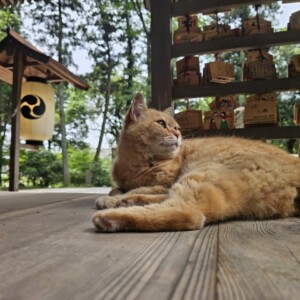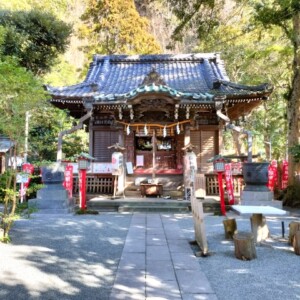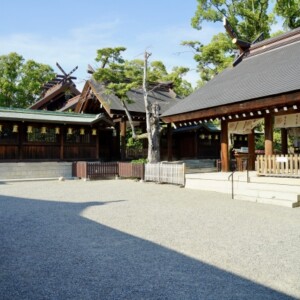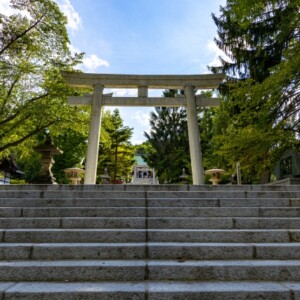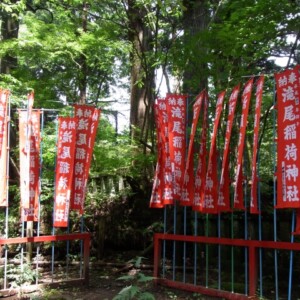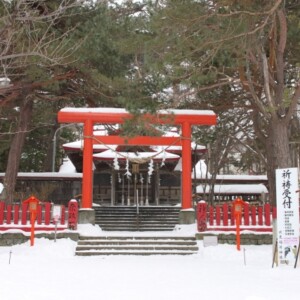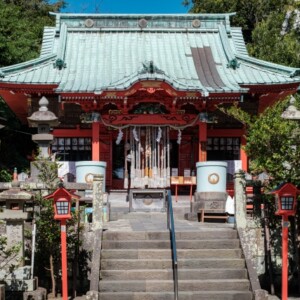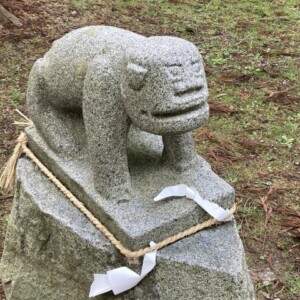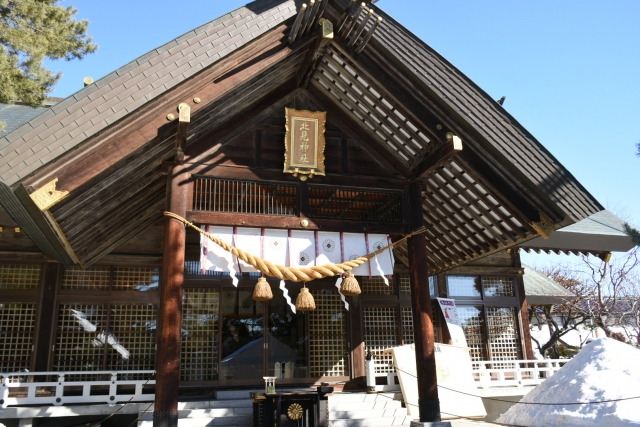
Kitami Shrine|Complete guide to the history, highlights, and worship information of this historic shrine
Kitami Shrine, located in the center of Kitami City, Hokkaido, is a shrine with a long history, having been developed along with the settlement of the Tondenhei soldiers in the Meiji era. The shrine enshrines Amaterasu and three other deities and has become a spiritual center for Kitami citizens. The shrine grounds, decorated with azaleas in spring and autumn leaves in fall, are beautiful in all four seasons, and are dotted with stone monuments and song monuments that tell the story of the pioneering history of the area.
Outline and basic information about Kitami Shrine
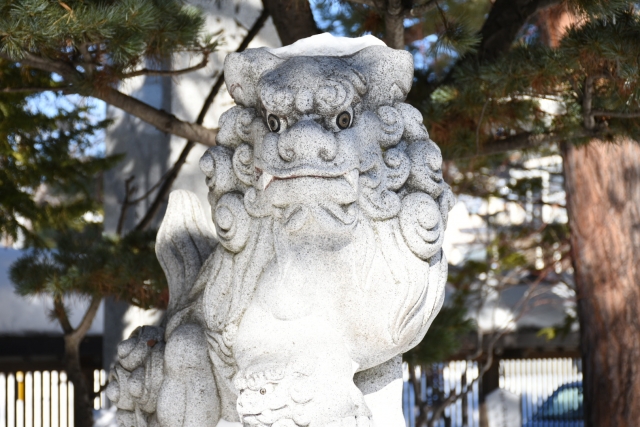
Kitami Shrine is a historic shrine that has been a part of the development of the region as the town shrine of Kitami City, Hokkaido. Since its construction in 1897, the shrine has inherited the spirit of the Tondenhei pioneering spirit and is now well known to many worshippers, including Kitami citizens. The shrine grounds are rich in nature, and a variety of flowers and trees delight the eyes of visitors from spring to fall.
History and Origin
When the 4th Tonden Infantry Battalion moved to Notsukegyu (present Kitami City) in June 1897, the battalion commander, Lieutenant Colonel Masayasu Koizumi, decided to dedicate the shrine to Amaterasu, and a temple was built on a hill at the southern end of present Notsukegyu Park to hold a ceremony to celebrate the establishment of Kitami Shrine. Initially, the shrine was called Gokoku Shrine.
Around the time of its construction, when pioneer immigrants settled by sea, they continued to pray to Sumiyoshi-no-mikoto, a guardian deity of the sea, during their boat trip, and after landing, the shrine was enshrined as the ancestral deity of the pioneers. In May 1905, the shrine was relocated to the present site to commemorate the Russo-Japanese War, and as the community developed, the shrine was also improved.
In 1920, with the development of Notsukegyu, there was a proposal to build a new shrine, and a new shrine building was erected at the present location. In 1921, the shrine was listed as a village shrine by the Ministry of Home Affairs, and its name was changed to Notsukegyu Shrine. In March 1942, it was listed as a township shrine, and in October of the same year, with the establishment of the municipal organization, the name was changed to the current Kitami Shrine.
After the war, in 1950, when Yasushi Akioka, Shoguji of Ise Jingu Shrine, visited the shrine, an application for the transfer of the spirit of Toyokebi-no-Kami, the god of agriculture, was approved by special approval, and Toyokebi-no-Kami was transferred to the shrine on June 24, 1950. In July 1980, the current shrine pavilions, built in the Shinmei-zukuri style with all-cypress cypress and copper shingle roofing, were completed with funds donated by citizens.
Gods and Benefits
Three deities are enshrined at Kitami Shrine. The main deity is Amaterasu Omikami, the supreme deity of Japan, who is believed to bring blessings such as national security, domestic safety, and good fortune.
Toyokebime is the deity of the outer shrine of Ise Jingu, and as the god of agriculture, is said to bring blessings for a good harvest and industrial development. As a god of agriculture, Toyokebime is worshipped as an important deity that supports the prosperity of the region, especially in the Kitami area, where agriculture is a key industry.
Sumiyoshi-no-Ookami is known as the god of maritime safety, traffic safety, and business prosperity, and was enshrined as the guardian deity of the ancestors who migrated by sea during the pioneer era. Even today, the shrine is visited by many worshippers who wish for travel safety and business success.
Highlights and Features of Kitami Shrine
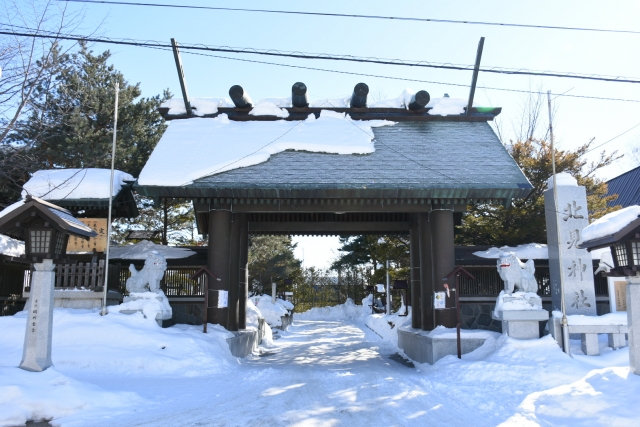
The precincts of Kitami Shrine are a beautiful harmony of history and nature, providing visitors with peace of mind and inspiration. Modern facilities and traditional shrine architecture are beautifully blended to create a variety of expressions throughout the four seasons.
Architectural and Structural Attractions
The current shrine pavilions, completed in July 1980, are built in the Shinmei-zukuri style with all-cypress and copper shingle roofing, a prestigious structure that follows the architectural style of the Ise Jingu Shrine. The Shinmei-zukuri is the basic form of ancient Japanese shrine architecture, characterized by its straight lines and simple beauty.
The cypress wood of the shrine pavilions has turned a beautiful amber color with age, and the copper-sheet roof has a unique greenish-blue hue. The series of buildings from the hall of worship to the main shrine building are robustly built to withstand the harsh Hokkaido climate, skillfully combining traditional techniques with modern construction methods.
The shrine office and the Mikoshi-den (portable shrine building) are also located in the precincts of the shrine, and in particular, the Mikoshi-den houses a magnificent portable shrine used for the Autumn Festival. The entire precincts of the shrine, including the tamagaki and torii (gateway to the shrine), are beautifully arranged to allow worshippers to face the shrine in peace and tranquility.
Nature and Scenic Beauty
Kitami Shrine offers beautiful natural scenery throughout the four seasons, with azaleas in the spring and autumn leaves in the fall. Especially in spring, azaleas are in full bloom throughout the shrine grounds, and their vivid colors enhance the sacred atmosphere of the shrine.
In the fall, maple and maple leaves turn beautiful colors, creating a spectacular view in harmony with the majestic buildings of the shrine. A stroll through the shrine in retrospect of its history is widely popular as a spiritual center for Kitami citizens.
The garden on the shrine grounds was created in 1980 when the shrine was reconstructed, and is aesthetically pleasing Japanese garden with plantings suited to the natural environment of Hokkaido. The grounds of the shrine, with its different seasonal appearances, are a popular place not only for worship but also for strolling and taking pictures.
Stone Monuments and Historical Highlights in the Precincts
Stone monuments are located throughout the grounds of Kitami Shrine, allowing visitors to stroll the grounds while thinking about the history of the shrine. These stone monuments and song monuments are valuable historical relics that tell the story of the pioneering history of the Kitami area and the progress of the shrine.
The monuments include memorials to Tondenhei soldiers, monuments honoring those who contributed to the development of the shrine, and song monuments recording the cultural activities of the area, each with deep historical significance. Walking through the shrine grounds while visiting these monuments, visitors can experience the history of development in the Kitami area from the Meiji era to the present day.
In particular, the inscriptions, which describe the transition from the Gokoku Shrine when it was founded to the present Kitami Shrine, the deep connection with Ise Jingu Shrine, and the ties with local residents, are highly valuable for understanding a part of the history of Hokkaido’s pioneering spirit.
Guide to Worship and Visiting the Shrine
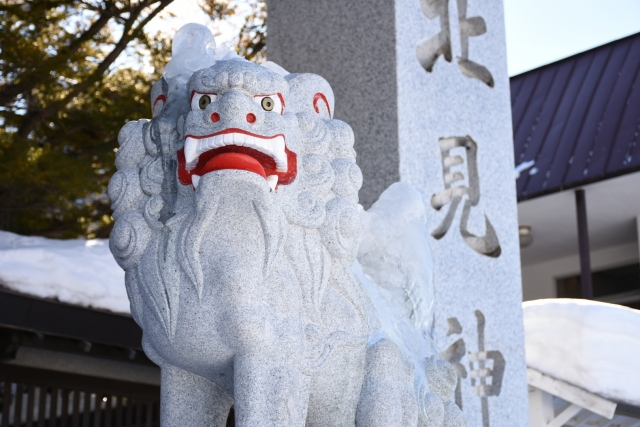
Kitami Shrine welcomes many worshippers throughout the year, allowing them to worship in peace and quiet according to Shinto etiquette. The shrine grounds are open 24 hours a day, and visitors are free to worship from early morning to late at night. Various prayer services are available at the shrine office, and attentive prayers are offered according to life’s milestones and wishes.
Worship Etiquette and Manners
There are certain rules of etiquette for worshipping at shrines, and following these rules is a good way to show respect to the gods. When passing through the torii gate, bow and walk along the edge of the path, as the center of the path is considered to be the path of the gods.
At the hand- and mouth-cleansing booth, purify your hands and mouth. First, hold the ladle with your right hand to cleanse your left hand, then change the ladle with your left hand to cleanse your right hand. Then, hold the ladle in your right hand again, rinse your mouth with water from the ladle in your left hand, and finally, set the ladle down and cleanse the handle.
In front of the hall of worship, perform the “Nirei Ni-Beat-Ichiryoku” (two rounds of bowing, two rounds of applause, and one round of bowing). First, bow deeply twice, then clap your hands together in front of your chest twice, and finally bow deeply once. Please put your money offering quietly into the money box, expressing your gratitude for the wish you have made.
Annual and Seasonal Events
Kitami Shrine holds various festivals throughout the year, including the Hatsumode (New Year’s visit) period from January 1 to 3, which is a popular time for Kitami citizens to visit the shrine, and the Dondoyaki (burning of old votive tablets) ceremony on January 15 at 8:00 a.m., where votive tablets and amulets that have protected the shrine for a year are burned over a sacred fire to pray for good health, The old charms and amulets that have protected the shrine for the past year are burned over the fire to pray for good health and good fortune.
On February 3, around the time of Setsubun, a Yakunen purification ceremony is held to pray for a safe passage through the critical years of life. The shrine grounds are especially crowded with worshippers during this period.
The spring festival is held in the cherry blossom season, and the approach to the shrine is lined with fairgrounds and a wide variety of entertainment. The Autumn Festival is the biggest festival of the year, held for three days to celebrate the peace and prosperity of Kitami City, the happiness of its citizens, and the autumn harvest. The parade of about 300 people and the large portable shrines parade through the city is a spectacular sight.
Shichi-Go-San (Seven-Five-Three Festival) is held for three-year-old boys and girls, five-year-old boys and seven-year-old girls to thank the gods for their growth to date and pray for their further growth in the future. Shinto wedding ceremonies are also held to celebrate the couple’s departure in a traditional Japanese atmosphere.
Red Seal and Good Luck Charm Information
Kitami Shrine offers red seals, which are written directly on the shrine’s walls. The shrine office also offers original red seal impression books, which are beautifully embroidered with the shrine pavilions, and are popular as souvenirs of visits to the shrine.
A variety of good luck charms are available for various wishes, such as traffic safety, academic success, business prosperity, and family safety. In particular, the amulet for a good harvest, named after the agricultural god Toyoke-bihime, and the amulet for traffic safety with the blessing of Sumiyoshi-no-mikoto are popular as they reflect the characteristics of the area.
The shrine office also offers “Ezomikuji,” a unique Hokkaido omikuji with a unique design in the shape of an onion, which has become a topic of conversation. There is also a curling oracle, and visitors can enjoy the award with a local flavor in connection with the fact that Kitami City is known as a sacred place for curling.
Access/Use Information
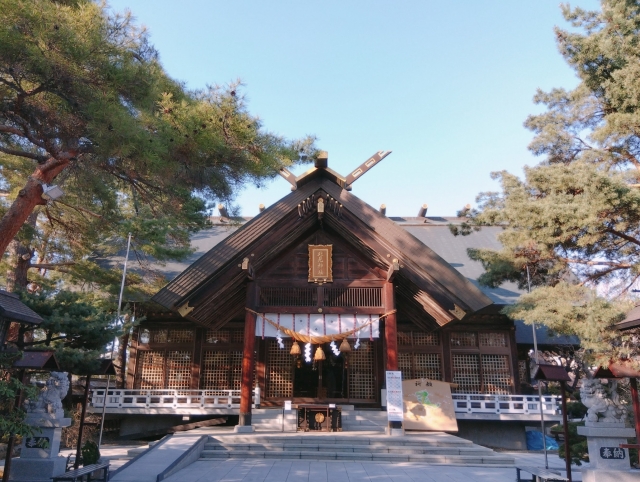
Kitami Shrine is located in the center of Kitami City and is easily accessible by both public transportation and private vehicles. Facing National Route 39, the shrine sits in a location that is easily recognizable from afar. Worship services are available 24 hours a day, and the shrine office is open during daytime hours for the awarding of red seals and amulets.
Access
The shrine is about an 11-minute walk from JR Kitami Station, and can be easily found by following the road in front of the station eastward along National Route 39, with a large torii gate on the left. Access on foot is relatively flat, making it a good place to stop by during sightseeing or a stroll.
If accessing by car, it is approximately 4 minutes from JR Kitami Station. Take National Route 39 toward Abashiri, and you will find Kitami Station about 2 to 3 kilometers away. The surrounding area is a mix of residential and commercial areas, with many landmark buildings, so even first-time visitors can arrive without getting lost.
Buses are available for public transportation, with the nearest bus stop at Kita 2 East 6 Chome, about a 3-minute walk to the shrine, and 3 and 4 East 4 Chome, about a 5-minute walk away.
Hours of Adoration, Fees, and Parking Information
Kitami Shrine is free to visit and access to the grounds is permitted 24 hours a day. There is no charge for worship, and everyone is welcome to visit. Please check the official website for details regarding the reception hours of the shrine office.
A dedicated parking lot is located on the Route 39 side of the shrine and can accommodate approximately 50 vehicles. During busy times such as New Year’s, a temporary parking lot will be set up, and information on this is announced annually on the website and in flyers. Parking is free of charge and is open to all visitors.
There are also pay parking lots nearby, such as Times Kitami Kita 5 East 3 and Norte Park Dobin Kitami Branch, making it relatively easy to find a parking space even when the dedicated parking lot is full.
We recommend that you contact the shrine in advance for detailed information on barrier-free accessibility. If you wish to visit the shrine in a group, please contact us in advance for appropriate guidance.
<Address> 6-11, Kita 2-jo Higashi, Kitami-shi, Hokkaido 090-0022, Japan
Reference site
Kitami Shrine Official Website: https://kitamijinja.com/



